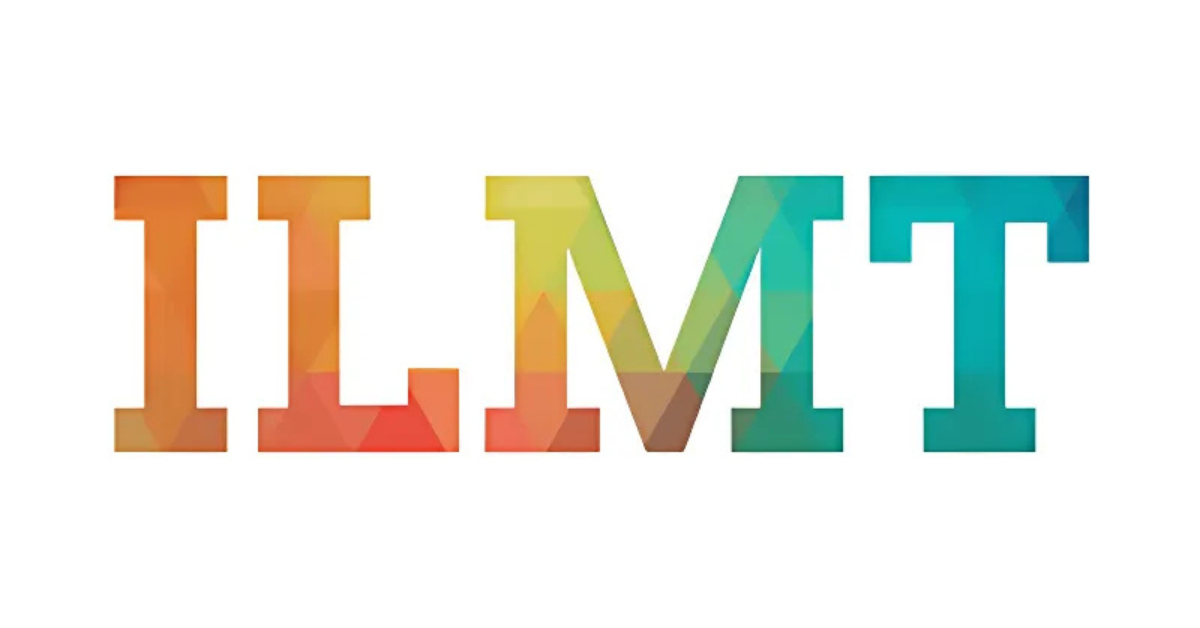Se sua empresa usa soluções IBM com direitos de sub capacidade, então obrigatoriamente conhece sobre ILMT (IBM License Metric Tool, ferramenta de métrica de licença da IBM), pois este é um requisito obrigatório da IBM para clientes que queiram aproveitar do licenciamento por sub-capacidade em seus produtos de software.
Como a maioria dos clientes da IBM se beneficiam do licenciamento por subcapacidade, isso significa que muito provável que você esteja enfrentando os desafios de implementar e usar o ILMT (IBM License Metric Tool). Então, este guia mostra quais são esses desafios de licenciamento IBM e de manutenção do IBM license metric tool ILMT.
Os modelos de licenciamento da IBM podem ser confusos, especialmente com a proliferação da virtualização, discutiremos então alguns deles com um pouco mais de detalhes.
Existem 3 modelos básicos que a IBM usa para licenciar seus softwares (Existem outros modelos, mas para efeitos dessa discussão, só cobriremos os mais comuns)
- Session / User
- Processor Value Units (PVU)
- Sub-Capacity
Cada um destes modelos possuem requisitos específicos e também de acordo com cada contrato, vamos portanto esclarecer as confusões em torno das diferenças.
IBM PVU
Em comparação com outros desenvolvedores de software, a IBM oferece termos e condições de licenciamento relativamente claros, que exigem uma precisão considerável. Produtos licenciados com base no modelo proprietário da IBM conhecido como Unidade de Valor do Processador, comumente referido como PVU, são particularmente interessantes, pois a maioria das licenças da IBM são vendidas exatamente neste modelo.
Simplificando, PVU é um valor atribuído pela IBM a núcleos de processadores específicos usados pelos sistemas em que seu software está sendo executado, dependendo do tipo de processador e da arquitetura do computador. Simples? Em teoria, sim.
Capacidade total e sub-capacidade
Isso deve ser considerado no contexto dos termos e condições de licenciamento na capacidade total ou no modo de sub-capacidade. E, novamente, a capacidade total significa a capacidade total de computação da máquina ou máquinas em que o software IBM está executando, enquanto a sub-capacidade é a capacidade do ambiente virtualizado que pode ser usado pelo produto IBM.
Logicamente falando, o segundo modelo deve oferecer mais benefícios, pois requer menos licenças. Os clientes da IBM podem decidir qual modelo de licenciamento combina melhor com eles. Desnecessário dizer, para obter preços de sub-capacidade uma organização precisa satisfazer condições específicas primeiro.
Estas condições incluem a implantação e configuração da versão mais recente do ILMT, além de rastrear o consumo de licença de software baseada em PVU da IBM.
ILMT – IBM license metric tool
O ILMT (License Metric Tool ou ferramenta de métrica de licença da IBM) é uma ferramenta sem custo ou melhor, um sistema sem custo, projetado para rastrear e relatar o consumo de licenças PVU.
Atualmente, os termos e condições de licenciamento da IBM levam em conta a multiplicidade de tecnologias de processador e virtualização, oferecendo ao mesmo tempo regras detalhadas para determinação dos requisitos de licenciamento para cada uma delas.
Essas regras exigem a coleta de informações atualizadas sobre a configuração de hardware e processador em cada nível de virtualização.
Isso, combinado com a necessidade de identificar o software IBM instalado com precisão, torna este processo aparentemente sem custo bastante complicado.
Arquitetura técnica do ILMT
O sistema ILMT consiste em três componentes:
- o Agente;
- a Plataforma BigFix ;
- e o aplicativo ILMT ou agente.
A função do Agente é inventariar os servidores regularmente de modo a identificar qualquer software IBM implantado e os valores das métricas de hardware atribuídas a cada dispositivo e virtualização.
A IBM exige que o ILMT seja instalado em cada computador com software que tenha sido comprado sob uma métrica de licenciamento de sub-capacidade PVU. Se o Agente não for implantado, a organização corre o risco de cálculo da taxa de licença para a capacidade total.
As diferenças podem ser várias dezenas e custam várias centenas de milhões em casos extremos. Infelizmente, a grande maioria dos clientes da IBM não está ciente da exigência de ter o Agente instalado também em sistemas onde o software IBM não é implantado diretamente, mas em vez disso são usados como controladores de recursos e virtualização.
Estes podem incluir a Zona Global Solaris ou o Domínio de Controle para Virtualização Oracle para SPARC (LDOM).
Na prática, algumas organizações tomam a decisão de instalar o Agente em cada servidor, reduzindo assim o risco de ter software IBM que não são contabilizados com o uso de ILMT.
Agrupamento ou Bundling no ILMT
Instalar o ILMT é apenas metade do esforço. O ILMT requer configuração e validação manual significativas para alinhar os relatórios à verdadeira configuração do ambiente.
Frequentemente, o software IBM é vendido em pacotes, ou seja, pacotes que oferecem acesso a alguns recursos, como o IBM DB2 Workgroup Server Edition ou a IBM WebSphere Application Server Network Deployment sem uma taxa adicional sob o contrato de licença para o software principal, por exemplo, o Portal da Websphere ibm.
Muitas vezes é o caso de que o mesmo software é instalado no ambiente na versão licenciada separadamente, o que requer categorização e cessão de cada instância identificada à licença relevante.
O ILMT fornece mecanismos que suportam o processo de tomada de decisão e os componentes são atribuídos à licença por padrão. No entanto, isso pode levar a relatórios PVU incorretos às vezes.
A compreensão do ambiente do servidor e da arquitetura das soluções IBM implantadas é a chave para o sucesso na atribuição de componentes individuais à licença relevante. Tal conhecimento facilita a categorização efetiva dos componentes detectados, além do estabelecimento de regras automatizadas de ILMT que, se utilizadas corretamente, reduzem a carga de trabalho necessária para validação/atribuição de componentes de aplicação padrão.
Para gerar um relatório ILMT correto, é preciso estar ciente dos tipos e número de licenças IBM dentro da organização. O ILMT não só permite a importação de dados contendo os números de SKUs de cada produto IBM que foi comprado, mas também os usa para facilitar o componente padrão – atribuição de licença.
Tal lista pode ser preparada com base no histórico de compras que está disponível no site do IBM Passport Advantage, bem como nas próprias fontes de informação da organização sobre compras de software.
O próximo passo, que é opcional, é registrar o número de licenças compradas no ILMT. Desta forma, o ILMT pode ser transformado em um sistema simples de Gerenciamento de Ativos de Software ou Software Asset Management SAM para produtos IBM e usado para rastreamento de consumo de licenças, além de gerar alertas automáticos sempre que as licenças ausentes forem identificadas.
Os serviços gerenciados de ILMT da 4MATT Tecnologia ajudam as organizações a realizar benefícios de licenciamento de sub-capacidade e maximizar o valor do ILMT através de seis áreas-chave:
- Instalação e Configuração – Instale e configure os parâmetros-chave do servidor ILMT e seus agentes no ambiente do cliente.
- Captura e emissão de relatórios de dados – Analisar e classificar informações identificadas sobre hardware e software para melhorar a precisão e a completude dos relatórios.
- Validação do status do produto – Identifique software ocioso ou não configurado que pode ser ajustado para reduzir potencialmente os requisitos de licenciamento.
- Relatório de Auditoria – Reconcilie o software IBM implantado em direitos de licença da IBM para identificar exposição potencial de licenças ou shelfware onde a organização poderia reimplantar licenças para reduzir o custo do software.
- Sustentaçao do Ambirnte ILMT – Auxilia as organizações nos processos e procedimentos de desenvolvimento e implementação para manter o software IBM e o ILMT e empregar estratégias para melhorar o consumo de licenças à medida que o ambiente de TI evolui ao longo do tempo.
- Manutenção total do ILMT – Entregar serviços gerenciados na infraestrutura do cliente ou através do ILMT na infraestrutura 4Matt Tecnologia em Microsoft Azure ou Amazon AWS.
O ILMT, suas versões e os sistemas operacionais suportados
Em 14 de janeiro de 2020, o suporte ao Windows Server 2008 e 2008 R2 e Windows 7 foi encerrado. Isso significa o fim das atualizações de segurança regulares, bem como qualquer tipo de apoio da Microsoft.
Manter o controle de todas as alterações que acontecem nos fabricantes de é um papel fundamental para a governança de software e segurança, papel hoje que também se expande para a governança de custos de nuvem IaaS, PaaS e SaaS.
Muitas empresas ainda contam com o Windows Server 2008 para funções básicas de negócios, como Servidor de Diretório, Servidor de Arquivos, Servidor DNS, Servidor de E-mail e também para aplicações específicas como o ILMT ou BigFix.
Diante deste cenário de mudanças, nesta semana a IBM informou que devido ao fim do suporte dos sistemas operacionais,
“…todos os clientes que possuem ILMT ou BigFix sobre estes sistemas operacionais sem suporte, deverão atualizar suas instalações em até 180 dias, visando usar do benefício de medições por sub- capacidade”.
Manutenção, suporte e versões do ILMT
Existem duas versões de ILMT mais comumente encontradas em uso:
- Versão 7.5 ;
- Versão 9.x .
O suporte para a versão 7.5 do ILMT terminou em 2017, então você precisará considerar mudar para a Versão 9 se você ainda não o fez. Para tornar as coisas mais desafiadoras, a Versão 9 usa a tecnologia de outro produto IBM – Big Fix – e, como resultado, não há opção de atualização fácil disponível. Você basicamente precisará instalar a Versão 9 do Zero para permanecer em conformidade.
Além disso, existem outros desafios fundamentais para o uso da ferramenta métrica de licenças da IBM (ILMT), que agora vamos explorar:
A instalação, implantação e manutenção complexas da IBM License Metric Tool (ILMT)
Diante da instalação do ILMT IBM License Metric Tool pela primeira vez, você descobrirá rapidamente que é difícil fazê-lo, não é apenas NNF (next, next e finish). É complexo e demorado para configurar, gerenciar e manter, mas a ajuda de uma empresa especialista em serviços gerenciados para a IBM pode ajudar– falamos mais sobre isso a frente.
Uma vez que você tenha o ILMT Ibm License Metric Tool instalado e com cobertura total em todo o seu ambiente, você precisa estar certo de que está reportando exatamente o que implantou em sua infraestrutura de TI.
No entanto, o ILMT é conhecido entre especialistas por fornecer relatórios imprecisos ou incompletos. Por exemplo, ele pode denunciar errôneamente os produtos Tivoli Storage Manager e Spectrum Protect separadamente. Da mesma forma, nossos próprios consultores identificaram erros em torno de servidores de mídia. Se não for verificado, esses erros aumentarão os reports de uso e os custos de sua licença.
Agrupamento automático (bundling) não é simples
Como você deve saber, classificar corretamente o software IBM pode reduzir as contas de manutenção em até 50%. Produtos mais caros podem ser empacotados com produtos com preços mais baixos e os clientes também podem muitas vezes excluir casos de software IBM que se enquadram na definição DR Cold or Warm Standby.
No entanto, a maioria dos clientes não estão cientes disso e do impacto direto que ele pode ter sobre as taxas e auditorias de software da IBM.
O ILMT “empacota automaticamente” o software de acordo com o inventário do cliente, mas isso nem sempre é correto e, na maioria dos casos, requer uma investigação mais aprofundada.
Por exemplo, o ILMT Ibm License Metric Tool não irá empacotar automaticamente uma instância da implantação de rede do servidor de aplicativos Websphere, que está sendo usada exclusivamente para hospedar o Business Process Manager. O primeiro custa cerca de US$ 2,5 mil por ano em manutenção por núcleo, então encontrá-lo e agrupar pode economizar milhares de dólares.
Da mesma forma, o ILMT não tem como determinar se o software IBM está em uma configuração DR Cold or Warm Standby.
Se você está confiante de que seu software está em uma configuração DR Cold or Warm Standby, e o software IBM em questão pode ser classificado como tal, você pode excluí-lo.
Usando o exemplo do Business Process Manager novamente, se você identificar um núcleo deste produto, que está configurado em uma configuração DR Cold ou Warm Standby, você pode economizar cerca de US$ 13 mil por ano.
Como você pode superar os desafios de manter os ambientes IBM ILMT e manter-se em conformidade em casos de auditorias?
Nossos serviços foram projetados para produzir um inventário independente e detalahdo do seu software IBM, incluindo alocações de processadores de sub-capacidade.
Através de uma interface altamente intuitiva, nossos serviços para a IBM automatizam o mapeamento de componentes para produtos, mas com um nível de precisão que o ILMT não pode corresponder.
A posição de licença efetiva (ELP), garante que você pague apenas pelo que usa quando renova suas licenças e contratos com a IBM.
Nossos serviços para IBM podem também extrair relatórios direto do ILMT, permitindo que você desfrute dos completos relatórios e modelagem de cenário que oferece em seus dados produzidos pelo ILMT.
Manter o ambiente ILMT e BigFix atualizado nem sempre é fácil, mas nos preparamos um check-list para que você possa cumprir todos os requisitos solicitados pela IBM:
- Instalar e configurar ILMT/BigFix dentro de 90 dias após a implantação do software que possui características de Sub-capacidade;
- Baixar e executar a versão mais recente do ILMT /BigFix do portal IBM;
- Usar a versão mais recente do Catálogo de Software para ILMT;
- Utilizar a última tabela PVU;
- Usar apenas Hardware (processador) homologados;
- Usar apenas os sistema operacional homologados;
- Usar apenas softwares de virtualização homologados;
- Identificar se os produtos SubCap são elegíveis.
- Criar e manter os relatórios trimestrais do ILMT;
A complexidade do licenciamento IBM exige uma abordagem estratégica para garantir a conformidade e otimizar os custos. A implementação do ILMT (IBM License Metric Tool) é um requisito para o subcapacity licensing, mas a configuração e manutenção da ferramenta podem ser desafiadoras. A compreensão dos diferentes modelos de licenciamento, como processor value units (PVU) e capacity or subcapacity, é fundamental para tomar decisões informadas.
A gestão de ativos de software (SAM) desempenha um papel crucial na otimização do uso de licenças IBM. A utilização de SAM tools e license consulting permite que as empresas rastreiem e gerenciem seus software assets de forma eficiente, evitando custos desnecessários e garantindo a conformidade com os licensing agreements. A análise de license usage e a license optimization são etapas importantes para identificar oportunidades de cost savings e significant cost savings.
A virtualização e a nuvem adicionam complexidade ao gerenciamento de licenças IBM. A utilização de virtualized environments e virtual server exige atenção especial às regras de licenciamento e à configuração do ILMT. A migração para microsoft azure e outros ambientes de nuvem também pode impactar os requisitos de licenciamento.
A conformidade com as políticas de licenciamento IBM é essencial para evitar auditorias e penalidades. A realização de quarterly reports e a compliance assurance são práticas importantes para garantir que a empresa esteja em conformidade com os license agreements. A preparação para ibm audits e software audit exige a coleta de hardware inventory e software inventory precisos.
A negociação de contratos com a IBM pode ser complexa, mas a expertise em license management e contract negotiation pode auxiliar nesse processo. A compreensão dos diferentes modelos de licenciamento e a análise dos ibm software licenses permitem que as empresas negociem contratos mais vantajosos.
A utilização do ILMT e do HCL BigFix Inventory (antigo IBM BigFix Inventory) é fundamental para o gerenciamento de licenças IBM. A ilmt installation e a configuração correta das ferramentas garantem a precisão dos relatórios e a conformidade com as políticas da IBM. A comparação entre ilmt or hcl bigfix e bigfix inventory auxiliam na escolha da melhor solução.
A análise de software usage e a identificação de software products não utilizados permitem que as empresas otimizem seus custos e reduzam o desperdício. A operational efficiency e a cost optimization são resultados diretos da gestão eficiente de licenças IBM.
A Microsoft licensing e a oracle license são exemplos de outros modelos de licenciamento que exigem atenção especial. A comparação entre os diferentes modelos de licenciamento e a análise dos software vendors permitem que as empresas tomem decisões informadas sobre seus investimentos em software.
A 4MATT Tecnologia oferece serviços especializados de gerenciamento de licenças IBM, auxiliando as empresas a otimizarem seus custos e a garantirem a conformidade. Fale conosco e descubra como podemos ajudá-lo a otimizar seus investimentos em software e a garantir a conformidade com as políticas da IBM.
Tag: bigfix inventory,license consumption,technology partners, bigfix platform,software license compliance,licensing model, infrastructure software, licens agreement, pvu based software, majority of ibm, ibm product, capacity of the machine,installing ilmt,license compliance,subcapacity licensing, software asset management, software asset, ibm software, ilmt and bigfix, software licensing, software license, ilmt and bigfix inventory, ibm software licensing, license metric tool ilmt, ibm license metric tool ilmt, processor value, ibm pvu, passport advantage, ativos de software,


